67. NOW, VOYAGER, 1942
- Jay Jacobson
- Jul 27, 2021
- 16 min read
Updated: Nov 19, 2023
A stellar melodrama about personal transformation, filled with Hollywood magic

“Now, Voyager” is not a landmark film, nor did it change the face of cinema. However, this delectable melodrama is a gripping textbook example of the magic that was Hollywood. This film earned three Academy Award nominations - including one for its dazzling performance by the grande dame of classic Hollywood, Bette Davis. A longtime audience favorite, it was ranked by the American Film Institute as the 23rd Greatest Love Story of All-Time and its cherished status is evident by the fact that more people have asked me if “Now, Voyager” will appear on my blog than any other film.

“Now, Voyager” is the Cinderella-ish story of “Charlotte Vale”, the repressed, ugly duckling daughter of a cruelly dictatorial mother. The emotional abuse caused by her tyrannical mom has put her on the verge of a nervous breakdown, and the film opens as “Dr. Jaquith” (the country’s foremost psychiatrist) visits her home for a mental assessment. With his help (and a stay at his sanitarium), she transforms from matronly spinster into striking socialite. Along the way she falls for an unhappily married man named “Jerry" (who happens to have an ugly duckling daughter of his own) and the two struggle to not give in to their love for one another. All of this is the delicious candy-coating on a story of substantial depth about overcoming obstacles and feelings of inadequacy, and finding courage to make our own choices - all in the name of becoming oneself. The title was taken from a poem by Walt Whitman:
“The untold want by life and land ne’er granted,
Now voyager sail thou forth to seek and find”
Its impeccably executed storytelling and unusual subject of inner growth turn this melodrama into enthralling entertainment to which everyone can relate.

It is often said that movies and movie stars from the Hollywood studio era were larger-than-life, and to a significant degree that is true. They require an ever so slight suspension of disbelief, presenting situations and characters that seem plausible, but under close inspection could only take place in a dream or on a screen. Majestic backdrops, elegant costumes, perfectly coiffed hairstyles, and dramatic performances all set to music create a romanticized version of life one can't help but covet. Such is the case with “Now, Voyager”, which contains a leading man just a bit too perfect for reality, and a leading lady whose life transforms from fearful recluse to completely confident sophisticate almost overnight. But the finely tuned skills of everyone involved make it all seem so possible. Davis’ performance in particular hits such notes of truth, she makes us believe everything presented is actually happening.

As with “Now, Voyager”, these movies set a high bar in love, glamour, and life, and gave audiences things to which to aspire - even if unattainable. Thus, the Hollywood studio era became fondly referred to as The Dream Factory. As the studio system dissolved and films became more “real”, the movie screen of dreams turned into a mirror in which that larger-than-life reflection was nowhere to be seen. Bette Davis inadvertently said it best in a 1971 interview on “The Dick Cavett Show” when she spoke about her approach to acting: “I think acting should look as if we were acting a little… which is a very old-fashioned theory today… [nowadays] we mustn’t have any idea that anybody knows the camera’s on them at all… it’s just life… we all have life twenty four, twelve hours a day. Sometimes we want to forget life, you know, and I think it should be a little larger than life. A little bit theatrical”.

“Now, Voyager” was based on a novel by New England novelist Olive Higgins Prouty. In coping with the separate losses of two infant children, she wrote the novel “Stella Dallas” (which was adapted into several films). A few years later she suffered from a nervous breakdown and began psychotherapy with a stay at a sanitarium. As part of her therapy, her doctor suggested she approach writing as a profession and she wrote a series of books about the “Vale” family, the most famous of which was “Now, Voyager” (considered a pioneering look a psychotherapy). Warner Brothers producer Hal Wallis bought the rights to the book and had Casey Robinson adapt the screenplay. Like many classic films, “Now, Voyager” started out a very different film. The first actresses in mind to star were Ginger Rogers and Irene Dunne. When Davis got wind of this she fought for the role, reminding Wallis that she was a New Englander like “Charlotte”, was already under contract to Warner Brothers (unlike Rogers and Dunne), and she was the best actress they had on the lot. She got the part.

Michael Curtiz had been chosen to direct but dropped out, either because he preferred to direct an action film or didn’t want to work again with Davis (the two had worked together on six films, furiously fighting on their last - 1939’s "The Private Lives of Elizabeth and Essex"). No one seems certain which it was, though Curtiz never did work again with Davis. It’s been said that Davis learned of "Now, Voyager" from her friend Irving Rapper, who had just proved himself a solid director with the success of his first three films. When Curtiz left, Davis evidently requested Rapper to direct. From his previous job as a dialogue coach, Rapper formed a great instinct with actors and felt casting was vital in his films. He personally chose Gladys Cooper and Claude Rains for their roles in this film - both of whom are outstanding. Rapper’s superlative directing of “Now, Voyager” is a large reason the film is so mesmerizing. He keeps things moving along and utterly interesting, picking camera angles which entirely satisfy while keeping us glued to the screen. Even the simple way he introduces “Charlotte” via her shoes is intriguing enough to induce a gasp by the time we see her face (both pre and post make-over). “Now, Voyager” established Rapper as a top director of the 1940s with a flair for “women’s pictures” (films with a female protagonist). He directed Davis in a total of five films and though they got along, years later he said she was quite difficult to work with.

As a young boy, British born Irving Rapper moved to New York where he later became a theater actor, appearing on Broadway by the 1920s. In 1935 he was hired by Warner Brothers as a dialogue coach and assistant director, and worked on films which included "The Sisters" and "Juarez", both starring Davis. His first film as director was 1941's "Shining Victory” (in which Davis appeared in a cameo). He was most at home in the cocoon of the studio system, so after it ended he directed only a handful of films. Other classics from his twenty-two directed films include "The Brave One", "The Corn Is Green", "The Glass Menagerie", "Marjorie Morningstar", and "Deception" (which reunited Davis, Henreid, and Rains). His final film was “Born Again” in 1978, in which he made his only screen appearance as an actor. He was gay and never married. Irving Rapper died in 1999 at the age of 101.
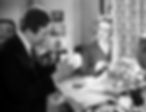
Just as “Now, Voyager” personifies Hollywood in top form, Bette (pronounced “Betty”) Davis as “Charlotte Vale” shows the best in screen acting. In a monumental performance as the repressed daughter trying to overcome her mother’s grip, Davis’ emotional honesty and vulnerability are hypnotizing. Being an actor I can’t help but be bedazzled by her work. Almost any decent actor can be highly dramatic, but a true test of skill can be found in the simple scenes. In her first scene, she greets her sister-in-law, mother, and “Dr. Jaquith” - each with distinct facial reactions, letting us know just how “Charlotte” feels about each of the characters. As she shows the doctor the upper floors of her house, she tries to hide a squirming uncomfortableness which begins to settle as she watches him look at the ivory boxes she’s carved. The subtle, shifting emotions seen on her face as she watches him elevate this scene into riveting drama. These little moments personify Davis’ ability, as she somehow combines just the right amount of theatricality with truth.
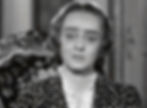
Movie stars rely on personality to capture hearts while great actors use talent. Nobody conquered being both a movie star and great actor better than Bette Davis. Her acting was deliberately mannered (with a trademark clipped speaking, pelvis driven way of walking, and often fidgeting hands), but her theatrics always stemmed from an emotional truth. She is the only actor I can think of that was able to successfully accomplish this complete balance of artifice and authenticity. Her astounding artistry and bold personality also contain an unexpected quality. One can’t take their eyes off her, as you can never guess what she will do next. No matter what emotional state she may inhabit, Davis is always exciting to watch.
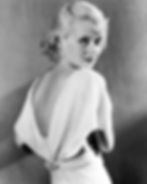
At eighteen years old, Bette Davis saw a play featuring actress Peg Entwistle and decided to become an actress (several years later Entwistle infamously jumped to her death from atop the letter "H" on the Hollywoodland sign). Davis began in theater, making it to Broadway in 1929. She moved to Hollywood in 1930 and was signed by Universal Studios. Not bestowed with the typical beauty required of film actresses at the time, the studio didn’t know what to do with her. Her film debut came in 1931 with “Bad Sister”, in which the head of the studio famously said Davis had "about as much sex appeal as Slim Summerville” (an old male actor also in the film). After a year of making several more films and being lent to other studios, Universal did not renew her contract. Just as she’s ready to leave Los Angeles, actor George Arliss requested her for the female lead in his 1932 film “The Man Who Played God”. She received good reviews for the film and Warner Brothers (who made the film) signed her to a five-year contract. Not exactly sure what to do with this oddity, Warners cast her in secondary and Ingénue roles, which after a while didn't gel with Davis' confidence and drive. She fought Warners to be lent to RKO Studios to play the evil "Mildred Rogers” in 1934’s “Of Human Bondage”. Against Warner's studio head Jack Warner’s wishes (he thought it would destroy her career), she got the role and her performance astonished people, earning her a Best Actress Oscar nomination. In her career Davis always sought good parts and often stated she had to fight to get every great role she ever played - the first being “Of Human Bondage". The following year she appeared in “Dangerous” and won her first Best Actress Academy Award. The classic, “The Petrified Forrest” came next, but was followed by two second-rate films and parts.

Mediocre films were enough for Davis to be fearful her career would be permanently damaged, so she went to the UK where she was offered better roles. That was a breach of her Warner’s contract, which (like all Hollywood actor’s contracts at the time) forced her to appear in any film the studio wished, and if she refused, was put on unpaid suspension for the duration of the film. All suspension time was added to the end of her contract, further extending it. Davis famously went to court in England with Warner Brothers and lost (in 1943 Olivia de Havilland went to court with Warners and won - which I previously wrote about in “The Heiress” post). Davis returned to Hollywood and though she lost the battle, she gained the respect of the Hollywood bigwigs (it’s been said Davis was the only person to make Jack Warner nervous when she called for a meeting with him). In 1938 she played the lead in “Jezebel”, a film about a headstrong Southern belle (Warner Brothers’ answer to the much publicized, soon-to-be-made “Gone with the Wind”), for which Davis earned her second Best Actress Academy Award. That film began the peak of her career, and was followed by four consecutive Best Actress Oscar nominations, including one for “Now, Voyager”. She was now getting meaty roles, and insisted on looking the part of her characters rather than like a movie star. In “Now, Voyager” she wanted to look as matronly and unappealing as possible, and in the film she is seen at both her ugliest and most beautiful.

This period in Davis' career includes films such as "Dark Victory", "The Little Foxes", "The Letter", "The Private Lives of Elizabeth and Essex", "Watch on the Rhine", "Mr. Skeffington", and "The Corn is Green” - all of which established her as one of the definitive actresses of her time. Davis had a reputation for not mincing words, being a disciplined professional workhorse, expecting the best from those around her, battling with her directors, and always fighting for better parts. She was a big box-office draw and became Warner Brothers’ most profitable actor (sometimes jokingly referred to as “the fifth Warner brother”). Her friend, Olivia de Havilland astutely summed up Davis’ career in her speech at the American Film Institute’s 1977 “Salute to Bette Davis” when she said: “Bette had the career I most admired. It was the career I wanted to have because she was a pioneer, a revolutionary in that she wanted to play real human beings - good and bad, lovely or ugly, whereas I fear most actresses wanted only to be beautiful and romantic. But not Bette. She was the only young actress to combine character work with stardom”.

Davis' career faltered in the late 1940s, though she appeared in perhaps her best role and film, “All About Eve” in 1950 (the first film on this blog). Although she worked continually until her swan song, “Wicked Stepmother” in 1989, the bulk of her later films (and TV shows) were generally of lesser quality. Exceptions include "What Ever Happened to Baby Jane?", "Dead Ringer", "Pocketful of Miracles", "The Virgin Queen", "The Star", "The Whales of August", "Death on the Nile", and “Hush...Hush, Sweet Charlotte”. She married and divorced four times, including her final marriage to actor Gary Merrill, whom while co-starring in “All About Eve”. You can read a bit more about Davis in that entry by clicking HERE. Bette Davis died in 1989 at the age of 81. Her sarcophagus reads: ”She did it the hard way”.

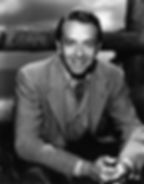
Paul Henreid co-stars as “Jeremiah ‘Jerry’ Duvaux Durrance”, the man who falls in love with “Charlotte”. This Austrian actor brings his international charm to the role, and “Jerry’s” compassionate, sensitive, and chivalrous nature make it understandable why “Charlotte” would come out of her shell and open her heart. Henreid’s chemistry with Davis is superb, as the two seem to continually comfort one another. Not only is Henreid ideal in the role, but in the film he performs one of cinema’s most iconic gestures as he lights two cigarettes in his mouth at once, keeping one for himself and giving the other to “Charlotte”. He does this three times in the film and it became a sensation for lighting cigarettes. According to Henreid, the script called for a more convoluted approach so he simplified it by lighting them the way he did for himself and his wife when driving. After working in Germany, Austria, and the UK, “Now, Voyager” was Paul Henreid’s second American film, his first being "Joan of Paris” also in 1942. Davis saw him in that film, wanted him for this, and “Now, Voyager” made him a star - solidified by his next film, “Casablanca”, also in 1942. He and Davis became friends and appeared together again in 1946’s “Deception” (also with Rapper and Claude Rains), in an attempt to recapture the magic created by “Now, Voyager”, but to no avail. Henreid also became a director, and directed Davis in the classic 1964 thriller, “Dead Ringer”. You can read more about Paul Henreid’s life and career in my “Casablanca” post.

Claude Rains plays “Dr. Jaquith”, the country’s foremost psychiatrist. One of Hollywood’s most talented actors, in his few scenes he is able to project the authority, confidence, and wisdom of a celebrated doctor in an underplayed, believable manner. Nothing phases “Dr. Jaquith” as he witnesses emotional fits and withstands insults. He puts on no airs as he brings an appropriate amount of humanity, so that it’s conceivable anyone, even “Charlotte”, could open their mind and heart to him. The way Rains observes the other characters is in itself praiseworthy. Watch his face as he sizes-up “Charlotte’s” mother upon their meeting, how he looks with such genuine excitement at “Charlotte’s” boxes, or studies her with kindness as she gets angry after he asks her for a cigarette. He is simply fantastic.

The son of a stage actor, Claude Rains grew up in the slums of London with a speech impediment and thick Cockney accent. He first appeared onstage at ten years old, and continued to work odd jobs in the theater as well as act. After briefly moving to New York, he returned to England to serve in WWI where he became a captain, but not before suffering vocal cord damage and losing most of the vision from his right eye. After the war he returned to the theater, got rid of his speech impediment and Cockney accent (replacing it with a Mid-Atlantic accent), and soon became a leading British stage actor and popular acting teacher (with pupils such as Charles Laughton and John Gielgud). He appeared in his one and only silent film in 1920, "Build Thy House”. In 1927 he returned to New York where he appeared in one Broadway show after another. His second film (and first in Hollywood) was as the title role in the classic 1933 horror film “The Invisible Man”, which began his hugely successful film career. He signed with Warner Brothers in 1935, and has since appeared in many classics, three of which are already on this blog (“Notorious”, “Casablanca”, and “The Adventures of Robin Hood”) where you can read more about his life and career. This Tony Award winning, four-time Academy Award nominated actor is one of a few character actors to become a full-fledged star, and he is one of my favorites.
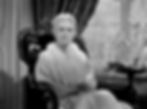
Gladys Cooper plays “Mrs. Windle Vale”, the uncompromising mother of “Charlotte”. Even with the film's other outstanding performances, if it weren’t for Davis, Cooper would steal the film. This is a woman whose mothering is so appalling it is easy to see how it caused “Charlotte’s” compromised mental state. As awful as “Mrs. Vale” may be, Cooper paints her as a woman sticking to her old-fashioned ways with such conviction, we’re led to feel she doesn’t even realize her domineering behavior is damaging. When confronted by “Dr. Jaquith” about her treatment of “Charlotte”, she responds, “I’ve kept her close by me always. When she was young, foolish, I made decisions for her. Always the right decisions. One would think a child would wish to repay a mother’s love and kindness”. It is a riveting performance and her scenes opposite Davis are hair-raising. Merely in her mid forties, Cooper was made to look older for the role, accentuated by wearing 19th century styled clothing. For her work in “Now, Voyager”, Cooper earned a Best Supporting Actress Academy Award nomination.

With her striking beauty, English born Gladys Cooper was a photographic model at six years old, a stage actress in her teens, and by 1914 became the most popular actress of the London stage - especially known for British musical comedies and operettas. During a theatrical postcard craze (which showcased actresses), her face was one of the most popular and she was considered the ideal English beauty (and was a sort of pin-up for the British military during WWI). Not wanting to be typecast as a glamour girl or musical comedy actress she began to branch out into other roles and ventured into silent films in 1913. Maintaining a full-time theater career, by the late 1920s she also co-managed London’s The Playhouse Theater, soon becoming the top actress-manager in English theater. In 1934 she began to appear on the New York stage, and in 1939 decided to move to Hollywood to begin a full-time film career. Her first film (at that point) was Alfred Hitchcock’s 1940 Oscar winning “Rebecca” (already on this blog), and from then on Cooper worked steadily as a character actress in films through the early 1950s, switching mostly to television until her death (working on both sides of the Atlantic).

Cooper also worked sporadically in theater, and was nominated for two Tony Awards - “The Chalk Garden” in 1956 and “A Passage to India” in 1962. In films, Cooper often played some sort of society woman, and was nominated for three Best Supporting Actress Oscars (“Now, Voyager”,"The Song of Bernadette” and "My Fair Lady”). Though best remembered for “Now, Voyager”, Cooper appeared in many classic films, and others include "Separate Tables", "The Bishop's Wife", "The Black Cat", "Kitty Foyle", and "That Hamilton Woman". She was also nominated for an Emmy Award for her work on the 1960s TV series, “The Rogues”. In 1967 she was she was appointed a Dame Commander of the Order of the British Empire (DBE) for her accomplishments in acting. She was married three times and became the mother-in-law of actor Robert Morley. Dame Gladys Cooper died in 1971 at the age of 82.
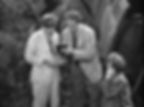
As I do on occasion, I feel I should mention one glaring scene of political incorrectness. As I’ve said before, these films are a product of the time in which they were made and however awful it may seem now, what we deem as inappropriate was acceptable in their day. There's a scene in “Now, Voyager” when “Charlotte” and “Jerry” are in a taxi in Rio de Janeiro and their Brazilian driver “Giuseppe" is played by Italian character actor Frank Puglia. Maybe because this era was before commercial flying took-off (so to speak), and other than newspapers, radio, and films, most people didn't have first-hand knowledge or experience with foreign lands - it was "anything goes" when it came to portraying foreigners in many of these films. Though “Giuseppe" is supposed to be speaking Portuguese, he actually speaks a strange, somewhat unintelligible mix of English, Portuguese, Italian, and Spanish, along with what sometimes sounds like improvised gibberish. Between that and his bumbling, not-too-bright ineptness, the scene becomes stereotypically insulting. Obviously done to add humor, instead of making me laugh, it makes me cringe. That said, this out-of-place scene becomes necessary plot wise.

As mentioned before, the technical aspects of “Now, Voyager” are all letter perfect and there are two additional names you might recognize if you are reading this blog consistently. First is costume designer Orry-Kelly, whom I wrote about in my “Some Like It Hot” post (where you can read more about his life and career). Masterful at creating costumes of simple elegance, he worked on some 300 or so films - many with Bette Davis, and the two had a great working relationship. They both knew how clothes could inform a character, and one can’t help but notice how “Charlotte’s” clothes change depending on her mental state, enhancing Davis’ looks and performance. Another name you should recognize is that of composer Max Steiner. His memorably stunning, emotional and romantic score for “Now, Voyager” is largely considered among cinema's best, and for it he won his second of three Academy Awards (the other two were for “The Informer” and "Since You Went Away”) out of twenty-four career nominations. Often called the Father of Film Music, he composed music for countless classics, including six films already on this blog, and you can read more about him in my posts on“Mildred Pierce” and “King Kong”.

This week’s recommended film is a popcorn eating, nail-biting melodrama that is as fiercely entertaining as it is emotional, and gives a clear glimpse at the marvelous escapism and inspiration films once had. You might want to keep a tissue or two in arm’s reach, just in case! Enjoy “Now, Voyager”!
This blog is a weekly series on all types of classic films from the silent era through the 1970s. It is designed to entertain and inform movie novices and lovers through watching one recommended classic film a week. The intent is that a love and deepened knowledge of cinema will evolve, along with a familiarity of important stars, directors, writers, the studio system, and a deeper understanding of cinema. I highly recommend visiting (or revisiting) the HOME page, which explains it all and provides a place where you can subscribe and get email notifications each Tuesday of every subsequently recommended film. At the bottom of the Home page you can also find a list of all films currently on this site. Please leave comments, share this blog, and subscribe so you can see which classic films will be revealed each week. Thanks so much for reading!
YOU CAN STREAM OR BUY THE FILM HERE:
OTHER PLACES YOU CAN BUY THE FILM:
As an Amazon Associate I earn from qualifying purchases, and any and all money will go towards the fees for this blog. Thanks!!
TO READ AFTER VIEWING (contains spoilers):

As mentioned above, “Jerry” lights a lot of cigarettes for “Charlotte”, but none as famous as the one at the film's end, which precedes the line, “Oh, Jerry, don't let's ask for the moon. We have the stars”. That line of dialogue has become iconic, and is ranked by the American Film Institute as the 46th Greatest Movie Quote of All-Time.




